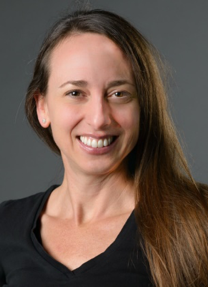Precision medicine is advanced by profiling cellular-to-molecular diversity using microengineered tools
Events | Mechanical Engineering
Precision medicine is advanced by profiling cellular-to-molecular diversity using microengineered tools
November 18, 2019 7:30 AM

Speaker
Amy E. Herr
Location
ESB 1001
Type
Seminar
Amy E. Herr is the Lester John & Lynne Dewar Lloyd Distinguished Professor of Bioengineering at the University of California, Berkeley and a Chan Zuckerberg Biohub Investigator. Prior to joining UC Berkeley, she was a staff member at Sandia National Labs, earned Ph.D. and M.S. degrees in Mechanical Engineering from Stanford University, and completed her B.S. in Engineering and Applied Science with honors from the California Institute of Technology. Her research has been recognized by the NIH New Innovator Award, NSF CAREER Award, Alfred P. Sloan Fellowship (Chemistry), and DARPA Young Faculty Award, & Visionary Award from the City of Berkeley and named to the Analytical Scientist’s top 100 most influential people in analytical science. Professor Herr has chaired the Gordon Research Conference (GRC) on the Physics & Chemistry of Microfluidics and will chair microTAS 2020. She is an elected Fellow of the American Institute of Medical and Biological Engineering (AIMBE), an entrepreneur, and was recently elected to the US National Academy of Inventors. Her research program lies at the intersection of engineering design, analytical chemistry, and targeted proteomics – with a recent focus on cytometry spanning fundamental biological to clinical questions.
From fundamental biosciences to applied biomedicine, high dimensionality data is increasingly important. In singe-cell measurement tools, microfluidic design has underpinned the throughput, multiplexing and quantitation needed for this rich data. Genomics and transcriptomics are leading examples. Yet, measurement of proteins lags. While proteins and their dynamic forms are the downstream effectors of function, the immunoassay remains the de facto standard (flow cytometry, mass cytometry, immunofluorescence). We posit that to realize the full potential of high-dimensionality cytometry, new approaches to protein measurement are needed. I will describe our ‘electrophoretic cytometry’ tools that increase target selectivity beyond simple immunoassays. Enhanced selectivity is essential for targets that lack high quality immunoreagents – as is the case for the vast majority of protein forms (proteoforms). I will share our results on highly multiplexed single-cell western blotting and single-cell isoelectric focusing that resolves single charge-unit proteoform differences. In fundamental engineering and design, I will discuss how the physics and chemistry accessible in microsystems allows both the “scale-down” of electrophoresis to single cells and the “scale-up” to concurrent analyses of large numbers of cells. Particular emphasis will be placed on precision control of fluids and materials transport in passive systems, with no pumps or valves. Precise reagent control allows for integration of cytometry with sophisticated sample preparation – the unsung hero of measurement science. I will discuss compartment-specific, single-cell western blotting for nucleo-cytoplasmic profiling, which eliminates the need for complex image segmentation algorithms. Lastly, I will link our bioengineering research to driving cytology needs, including understanding the role of protein signaling and truncated isoforms in development of breast cancer drug resistance and understanding protein signaling in individual circulating tumor cells. Taken together, we view microfluidic design strategies as key to advancing protein measurement performance needed to address unmet gaps in quantitative biology and precision medicine.